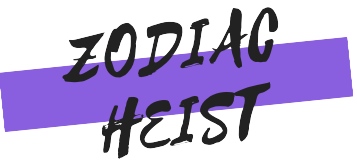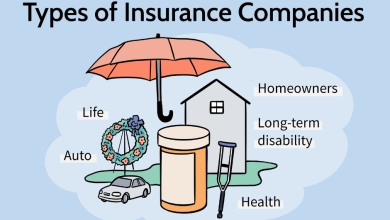A Comprehensive Guide to Health Insurance Options in the United States

Introduction:
In the United States, the landscape of healthcare and health insurance can often feel like navigating a maze, with its complexities, terminology, and multitude of options. Access to quality healthcare is vital for individuals and families, yet understanding the various health insurance options available can be overwhelming. This comprehensive guide aims to demystify the intricacies of health insurance in the USA, providing in-depth insights into different types of coverage, enrollment processes, key considerations, and strategies for optimizing healthcare choices.
Types of Health Insurance Plans:
Health insurance plans in the USA come in various forms, each with its own set of features, network structures, and cost-sharing mechanisms. Understanding the distinctions between these plans is essential for selecting coverage that aligns with individual needs and preferences.
- Health Maintenance Organization (HMO) Plans: HMO plans typically require individuals to choose a primary care physician (PCP) and obtain referrals from the PCP to see specialists. These plans often offer comprehensive coverage but may have more limited provider networks compared to other types of plans. HMOs usually require members to use in-network providers for non-emergency care.
- Preferred Provider Organization (PPO) Plans: PPO plans offer greater flexibility in choosing healthcare providers, allowing individuals to visit specialists without referrals and receive partial coverage for out-of-network care. While PPO plans generally have higher premiums and deductibles than HMO plans, they provide greater freedom of choice in healthcare provider selection.
- Exclusive Provider Organization (EPO) Plans: EPO plans combine elements of HMO and PPO plans, offering comprehensive coverage within a specified network of providers. Like PPO plans, EPO plans do not typically require referrals to see specialists but may not provide coverage for out-of-network care except in emergencies.
- Point of Service (POS) Plans: POS plans function similarly to HMO plans but may offer some out-of-network coverage, typically at a higher cost to the member. These plans require individuals to select a primary care physician and obtain referrals for specialist visits, with the option to seek care outside the network at a higher cost-sharing rate.
Employer-Sponsored Health Insurance:
Many Americans obtain health insurance coverage through their employers, who often offer a range of health insurance plans as part of employee benefits packages. Employer-sponsored health insurance plans vary in terms of coverage options, premiums, and employer contributions. Employees typically have the opportunity to select a plan that best meets their needs and preferences during open enrollment periods.
Health Insurance Marketplace:
The Health Insurance Marketplace, established under the Affordable Care Act (ACA), serves as a centralized platform for individuals and families to compare and purchase health insurance plans. Plans available through the Marketplace must meet certain standards for coverage and affordability, and financial assistance in the form of premium tax credits and cost-sharing reductions is available to eligible individuals based on income.
Medicare and Medicaid:
Medicare is a federal health insurance program primarily for individuals aged 65 and older, as well as certain younger people with disabilities and those with end-stage renal disease. It consists of different parts, including:
- Part A (hospital insurance): Covers inpatient hospital stays, skilled nursing facility care, hospice care, and some home healthcare services.
- Part B (medical insurance): Covers outpatient care, physician services, preventive services, and durable medical equipment.
- Part C (Medicare Advantage plans): Private health insurance plans that provide Medicare-covered benefits, often including prescription drug coverage and additional benefits like dental and vision care.
- Part D (prescription drug coverage): Stand-alone prescription drug plans that help cover the cost of prescription medications.
Medicaid, on the other hand, is a joint federal and state program that provides health coverage to low-income individuals and families who meet eligibility criteria set by each state. Medicaid benefits vary by state but typically include essential healthcare services such as doctor visits, hospital stays, prescription drugs, and preventive care.
Open Enrollment and Special Enrollment Periods:
Open enrollment is a specified period during which individuals can enroll in or make changes to their health insurance coverage for the upcoming year. Open enrollment periods may vary depending on the type of coverage, with employer-sponsored plans, Marketplace plans, and Medicare each having their own enrollment timelines. Special enrollment periods may also be available outside of open enrollment for individuals experiencing certain qualifying life events, such as:
- Marriage or divorce
- Birth or adoption of a child
- Loss of other health coverage (e.g., due to job loss)
- Relocation to a new area with different health insurance options
Conclusion:
Navigating the healthcare maze in the United States requires a thorough understanding of the various health insurance options available, as well as careful consideration of individual needs, preferences, and financial circumstances. By familiarizing themselves with different types of plans, enrollment processes, and eligibility criteria, individuals and families can make informed decisions to select the best health insurance coverage to meet their needs and protect their well-being. Additionally, seeking guidance from healthcare professionals, insurance brokers, or enrollment counselors can provide valuable assistance in navigating the complexities of health insurance and optimizing healthcare choices. Ultimately, ensuring access to quality healthcare coverage is essential for promoting health and wellness for all Americans.




